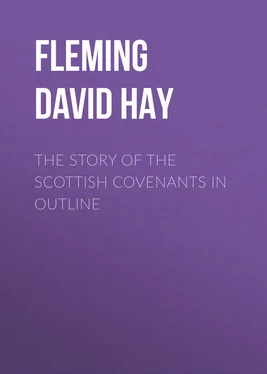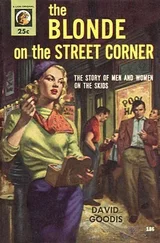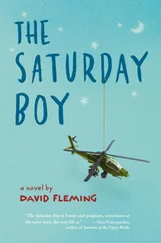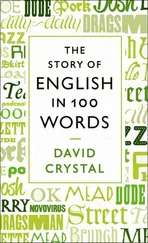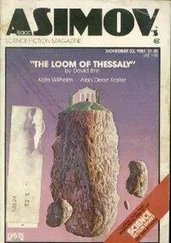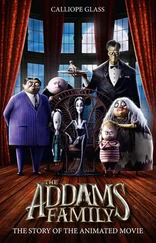David Fleming - The Story of the Scottish Covenants in Outline
Здесь есть возможность читать онлайн «David Fleming - The Story of the Scottish Covenants in Outline» — ознакомительный отрывок электронной книги совершенно бесплатно, а после прочтения отрывка купить полную версию. В некоторых случаях можно слушать аудио, скачать через торрент в формате fb2 и присутствует краткое содержание. Жанр: foreign_antique, foreign_prose, на английском языке. Описание произведения, (предисловие) а так же отзывы посетителей доступны на портале библиотеки ЛибКат.
- Название:The Story of the Scottish Covenants in Outline
- Автор:
- Жанр:
- Год:неизвестен
- ISBN:нет данных
- Рейтинг книги:4 / 5. Голосов: 1
-
Избранное:Добавить в избранное
- Отзывы:
-
Ваша оценка:
- 80
- 1
- 2
- 3
- 4
- 5
The Story of the Scottish Covenants in Outline: краткое содержание, описание и аннотация
Предлагаем к чтению аннотацию, описание, краткое содержание или предисловие (зависит от того, что написал сам автор книги «The Story of the Scottish Covenants in Outline»). Если вы не нашли необходимую информацию о книге — напишите в комментариях, мы постараемся отыскать её.
The Story of the Scottish Covenants in Outline — читать онлайн ознакомительный отрывок
Ниже представлен текст книги, разбитый по страницам. Система сохранения места последней прочитанной страницы, позволяет с удобством читать онлайн бесплатно книгу «The Story of the Scottish Covenants in Outline», без необходимости каждый раз заново искать на чём Вы остановились. Поставьте закладку, и сможете в любой момент перейти на страницу, на которой закончили чтение.
Интервал:
Закладка:
David Hay Fleming
The Story of the Scottish Covenants in Outline
This short sketch was written as an Introduction to the recent edition of the late Rev. J. H. Thomson’s “Martyr Graves of Scotland.” The publishers having now resolved to issue my sketch separately as a convenient summary of the covenanting struggle, I have revised and considerably enlarged it.
No Englishman, it has been said, can distinguish the National Covenant from the Solemn League and Covenant. It is to be feared that many Scotchmen are in the same case. The Covenants, indeed, have been sadly mixed up even by native historians; and comparatively few people seem to have any idea of the number of these religious bonds.
D. H. F.May 1904.
Beginning at the left hand is Johnston of Warriston showing a letter to the Earl of Argyll, while Lord Eglinton is in the rear. Two ladies come next – the Marchioness of Hamilton, in widow’s weeds, seated, with Lady Kenmure standing beside her. The group around the tombstone includes Lord Rothes in the act of signing the document, Lord Louden, Lord Lothian, and the Earl of Sutherland; while Montrose is on the near side. Then there are Hope of Craighall, with the Rev. Samuel Rutherfurd, and in the foreground, standing on a tombstone, is the Rev. Alexander Henderson.
The Story of the SCOTTISH COVENANTS in Outline
Scotland is pre-eminently the land of the Covenant, and the land is flowered with martyr graves. When the covenanting cause was in the ascendant, many were willing to appear on its side who cared little for it in reality; but when it waned, and, after the Restoration, the time of trial came, the half-hearted changed sides, or fell away like leaves in autumn, and the love of many waxed cold. Then it was that the faithful remnant stood revealed and grew still more faithful.
While they were opposed and oppressed by some of their former associates, they were, on the other hand, reinforced by the accession of outstanding men, like Richard Cameron and Thomas Forrester, who, in their earlier years, had complied with Prelacy; and by others, like James Renwick, Patrick Walker, and Sergeant Nisbet, who were born after the persecution had actually commenced. Men, and even women, were found ready and willing to endure all hardships, and to brave an ignominious death, rather than relinquish or compromise the principles which they held so dear, and to which, as they believed, the nation was bound by solemn covenants.
Bands or Covenants
The story of religious covenanting in Scotland covers a long period. The covenants, or bands as they were frequently called, may be divided into three classes – public, semi-public, and private – and the influence of each has been felt at some of the most critical periods in the history of the country.
Personal Covenants
The private or personal covenant, in which the individual Christian gave up himself, or herself, formally to the service of God, helped many a one to walk straight in crooked and trying times. These private transactions were neither less solemn nor less sacred because the knowledge of them was confined to the covenanter and his Lord.
A Specimen
Many specimens of these old personal covenants have been preserved, and they throw a vivid light on a type of earnest piety, which, it is to be feared, is rather rare in the present day. One of these came into my hands twenty years ago, inside a copy of Patrick Gillespie’s well-known work, “The Ark of the Testament Opened.” The book was printed at London in 1661, and is still in the original binding, but the old brown calf had given way at the joints, and so one of the previous owners had it rebacked. Fortunately, the binder preserved the fly-leaves, on which there are a number of jottings and dates; and on one of them there is a genuine personal covenant, written and signed by Francis Wark. He had written this covenant on that side of the last fly-leaf which was next to the board, and had then pasted the edges carefully down to the board, so that no one could see that there was any writing there. After being hidden for more than a century and a half, it was revealed by the binder. As it is very short, it may be quoted as an example: —
“I, Francis Wark, doe hereby testifie and declair that I, being a poor miserable sinner deserving hell and wrath, and that vengance is my due, and I, not being able to deliver myself from wrath nor satisfie the justice of God for my guilt, doe this day betake myself to the righteousnes of Jesws Christ, fulie renowncing all righteousnes in my self, and betakes me to his mercy; and likways that I take the true God, who made the heavns and the earth and gave me a being upon the world, to be my God and my portion (renowncing the devill the world and the flesh), and resigns up myself sowll and body to be his in tyme and through all the ages of endless eternity, even to him who is one God, Father, Son, and Holy Ghost; and I take Jesws Christ for my Saviour, my Priest, Prophet and King, and engadges to be for him and his glory, whill I have a being upon the earth: in witnes quhereof I have subscrived this with my hand, Glasgow the 21 day of May 1693,
“Francis Wark.”God our Portion
Documents of this kind help one to understand the reply of the covenanter’s wife when the dragoons were driving away all the cattle in her husband’s absence. A soldier, who had not altogether lost his feelings of humanity, turned back to her and said: “Puir woman, I’m sorry for you.” “Puir!” she exclaimed, “I’m no puir; the Lord is my portion, and ye canna mak me puir!”
There is still some uncertainty as to the precise date when public or semi-public religious covenanting was adopted in Scotland.
Supposed Band of 1556
In speaking of his own preaching in 1556, Knox tells that, at that time, most of the gentlemen of the Mearns “refuissed all societie with idolatrie, and band thame selfis , to the uttermost of thare poweris, to manteane the trew preaching of the Evangell of Jesus Christ, as God should offer unto thame preachearis and oportunitie.” Dr M‘Crie understood this to mean that these gentlemen “entered into a solemn and mutual bond, in which they renounced the Popish communion, and engaged to maintain and promote the pure preaching of the Gospel, as Providence should favour them with opportunities.” In David Laing’s opinion, Knox’s words do not necessarily imply that the mutual agreement or resolution referred to actually assumed the form of a written “band” or covenant. If it did, Knox has not embodied it in his “History,” nor is any copy known to exist.
Band of 1557
But as to the reality, the nature, and the precise date of the band of 1557, there is no room for dubiety. Knox was on the Continent when it was entered into; but he relates the circumstances which called it forth, explains the object it was meant to serve, and gives a copy of the document itself, as well as the names of the principal men who signed it. The leaders of the Reforming party resolved to persist in their purpose, to commit themselves and their all into God’s hands, rather than allow idolatry manifestly to reign, rather than suffer the subjects of the realm to be defrauded as they had been of the preaching of Christ’s Evangel. “And that everie ane should be the more assured of other, a commoun band was maid, and by some subscrived.”
Calderwood derived his copy of the document, and his account of the circumstances which called it forth, from Knox. Fully forty years ago an original copy of the band was found, and is now in the National Museum of Antiquities, Edinburgh. It only bears five signatures, those of Argyll, Glencairn, Morton, Lorne, and John Erskine. The day of the month is left blank; but the one which Knox followed is dated “the thrid day of December.” Knox also says that it was subscribed by many others. The explanation probably is that (as in 1638) a number of original copies were made, and signed by the leaders before being sent out for additional names.
Читать дальшеИнтервал:
Закладка:
Похожие книги на «The Story of the Scottish Covenants in Outline»
Представляем Вашему вниманию похожие книги на «The Story of the Scottish Covenants in Outline» списком для выбора. Мы отобрали схожую по названию и смыслу литературу в надежде предоставить читателям больше вариантов отыскать новые, интересные, ещё непрочитанные произведения.
Обсуждение, отзывы о книге «The Story of the Scottish Covenants in Outline» и просто собственные мнения читателей. Оставьте ваши комментарии, напишите, что Вы думаете о произведении, его смысле или главных героях. Укажите что конкретно понравилось, а что нет, и почему Вы так считаете.
